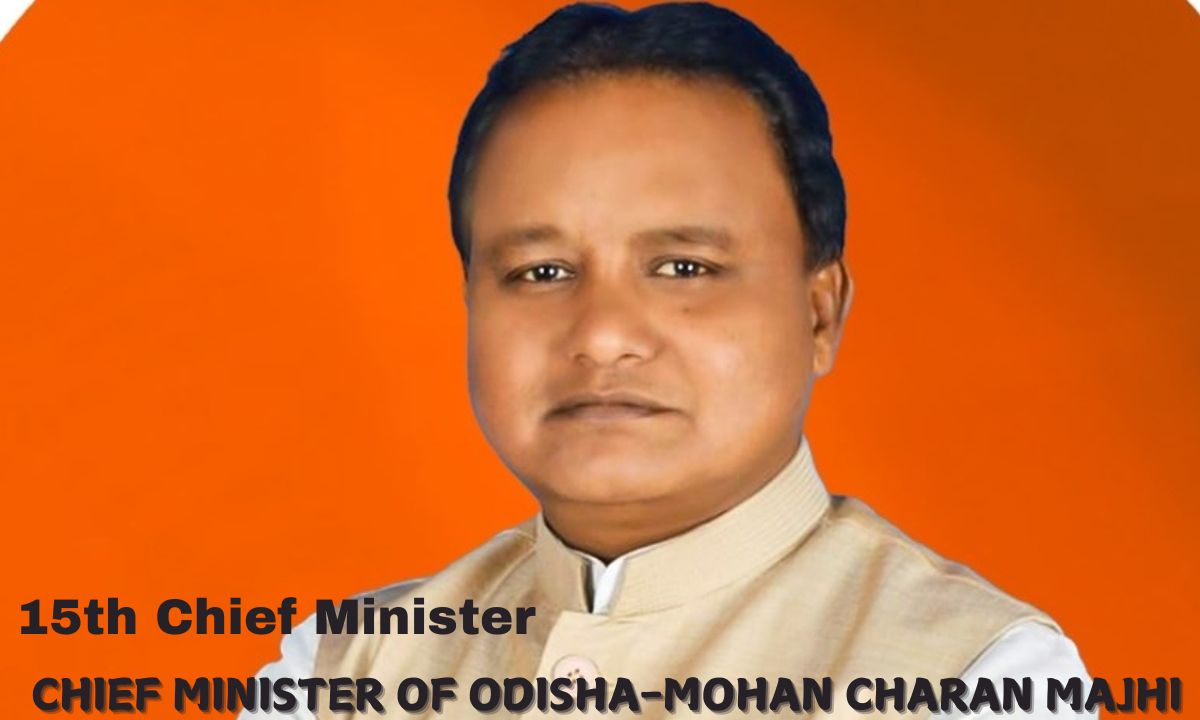Introduction: -
Pre-Budget-2024, the finance minister will present today, 1-2-2024, and will stay valid for the first four months of the new fiscal year that starts in April. Popularly known as an Interim Budget,
Finance Minister Nirmala Sitharaman is set to present the budget for the Financial Year 2024-25 on February 1. This will be the final annual financial statement of the BJP-led PM Narendra Modi government's second term.
This budget is also ‘interim’ in nature as the government is set to face a general election in April-May this year. The full budget will be presented in July by the incoming government. In India, the financial year starts on April 1 and ends on March 31 of the following year.
What is the Union Budget?
The Union Budget is a financial statement of the government's estimated revenue and expenditure for that particular year, according to Article 112 of the Indian Constitution. The Union Budget is prepared for a period between April 1 to March 31 each year and is classified into (a) revenue budget and (b) capital budget.
The Union Budget presented for 2017-18 was path-breaking in many ways. With it, the day of the budget presentation was shifted from the end of February to the first day of February. The Railway Budget was also integrated with the Union Budget in 2017.
History of the Union Budget: -
India’s first budget was presented on April 7, 1860, when India was still under British colonial rule. It was introduced by the then Finance Minister of India, James Wilson.
The first Union Budget of Independent India was presented by the first Finance Minister of Independent India, Sir R.K. Shanmugham Chetty, on November 26, 1947. It is noteworthy that the first Union Budget was presented amidst widespread riots due to the partition of India.
This budget was meant for seven and a half months, following which the next budget was to be implemented from April 1, 1948. It was the first Union Budget wherein it was decided that both India and Pakistan would share the same currency till September 1948.
Sir Chetty resigned as the Finance Minister of India, and the responsibility was ultimately passed on to John Mathai, who presented the subsequent Union Budgets of 1949-50 and 1950-51. The budget of 1949-50 was the first instance of a budget being prepared for a United India, including all princely states.
Some of Secrets formalities of the Budget:
The Union Budget documents are treated with utmost secrecy because any leak in official figures can have catastrophic effects. These documents are treated with so much secrecy that even the Finance Minister is not authorised to keep the Blue Sheet.
The Union Budget is prepared based on data and key numbers in the Blue Sheet. Only the Joint Secretary (Budget) is allowed to keep this important sheet.
Until 1950, all important budget papers were printed inside the Rashtrapati Bhavan premises.
However, an imminent data leak left the government with no option but to shift the process to a government-operated press in Minto Road till 1980.
Post-1980, the printing of budget papers is done in a basement in the North Block, where the Finance Ministry is located.
The Halwa Ceremony is a famous ritual, which marks the start of the printing of budget documents. Understandably, officials who are directly in contact with the budget papers and data are locked down in the basement of the North Block.
Some of the lesser-known facts of the Union Budget:
The Railway Budget of the country has always been introduced as a separate budget for the past 92 years till the year 2017, which saw the merger of the railway budget into the Union budget.
Indira Gandhi was the only woman Finance Minister who was also the Prime Minister while presenting the budget.
The present government has shifted the budget announcement from the last working day of February to the first working day of February.
Indian Media termed the Union Budget of India for the year 1997-98, as the "Dream Budget" because it was the road map for economic reforms in including the dropping of income tax rates, the removal of the surcharge on corporate taxes, and reduced corporate tax rates.
The Budget of the financial year 1973-74 is known as the "Black Budget" as the nation had a deficit of Rs 550 cr.
Key 20 Highlights of Union Pre-Budget Budget-2024.
The 2024 interim budget presentations by Finance Minister Mrs Sitharaman brought forth a slew of transformative initiatives aimed at bolstering various sectors of the economy.
1. Rooftop solarisation and free electricity: -1 Crore households will benefit from rooftop solarisation, providing up to 300 units of free electricity in a month.
2. Change of Electricity Vehicles:-Entrepreneurship opportunities for vendors and employment prospects for youths skilled in manufacturing, installation and maintenance of electricity vehicles.
3. Promotion of post-harvest activities:-Government to promote private and public investment in post-harvest activities, including aggregation, modern storage, supply chains, processing and branding activities.
4. Expansion of Nano DAP application:- The success of nano urea, Nano DAP application on various crops will be expanded in agricultural zones.
5. Housing for the Middle class: Launch of a scheme to assist the deserving sections of the middle class living in rented houses, slums, chawls or in authorised colonies to buy or build their own houses.
6. Expansion of Medical colleges: The government plans to establish more medical colleges by utilising existing hospital infrastructures, with a committee to be set up for examinations and recommendations.
7. Vaccination for girls:-Encouragement of vaccination for girls aged 9-14 years to prevent cervical cancer.
8. Comprehensive maternal and child healthcare programme:- Various schemes under maternal and child healthcare are to be amalgamated into one comprehensive programme for improved synergy in implementation.
9. Extension of Ayushman Bharat coverage:-Extension health care coverage under Ayushman Bharat to all ASHA workers, Anganwadi workers and helpers.
10. Atmanirvar Oilseeds Abhiyan:-Strategy formulation to achieve self-reliance in oilseeds through research, adoption of modern farming techniques, market linkages and crop insurance.
11. Dairy Development Programme:-Formulation of a comprehensive programme to support dairy farmers, leveraging existing schemes to enhance productivity.
12. Matsaya Sampada:-Promotionn of investments in fisheries to generate employment opportunities, with a separate department set up for fisheries under the government’s initiative.
Implementation of Pradhan Mantri Matsaya Sampada Yojana to be stepped up to enhance aquaculture productivity, double exports and generate more employment opportunities.
Integrated Aquaparks are to be set up.
13. Promoting Investment:-Measures are encouraged to encourage sustained foreign investment, including negotiating bilateral investment treaties and providing Rs 75,000 Crore as interest-free loans to support milestone-linked reforms by the state government.
14. Revised estimates for 2023-24:-Revised estimates of total receipts other than borrowings if Rs 27.56 Lakh Crore, with tax receipts amounting to Rs .23.24 Crore.RE of the fiscal deficit stands at 5.8% of GDP.
15. Infrastructure Development:-Implementation of 3 major railway corridor programmes under PM Gati Shakti to improve logistics efficiency and reduce cost.
Promotion of foreign investment via bilateral investment treaties to negotiate.
Expansion of existing airports and comprehensive development of new airports under the UDAN Scheme.
Promotion of urban transformation via Metro Rail and NaMo Bharat.
16. Tourism Development:-States will be encouraged to develop iconic tourist centres to attract business and promote opportunities for local entrepreneurship.
Projects for port connectivity, tourism infrastructure and amenities will be taken up in the islands, including Lakshadweep.
Long-term interest-free loans are to be provided to the State to encourage the development of tourism.
G20 meetings in 60 places presented a diversity of India to a global audience.
17. TAX Proposals:-Certain tax benefits to Startups and investments made by sovereign wealth funds /pension funds, tax exemptions of some IFSC units earlier expiring on 31.32024 extended to 31.3.2025.
Withdrawal of outstanding direct tax demand up to Rs 25000 pertaining up to FY 10.
Withdrawal Up to Rs 10,000 for FY 11 to FY 15.
No Tax liability for taxpayers with income up to Rs 7,00,000 under the New Regime.
18. Sustainable Development:-
Commitment to “ Net Zero” by 2070.
Setting up of coal gasification and liquefication capacity.The phased mandatory blending of CNG, PNG and compressed biogas.
Financial assistance for the procurement of biomass aggregation machinery.
19. Welfare of Farmers -Annadata:-
Direct financial assistance to 11.8 crores of farmers under PM-KISAN.Crop Insurance to 4 Crore under PM Fasal Bima Yojana.
25 Crore people moved out of Multidimensional poverty. Credit assistance to 78 Lakh street vendors under PM-SVA Nidhi.
20.Rupee Comes From & Rupee Goes Out:-
A-Rupee Comes From:-
Income Tax-19%
Union ExciseDuty- 55%
Corporate Tax-17%
GST& Other Tax-18%
Customs-4%
Non Debt Capital Receipts-1%Non-Taxx receipts-7%
Borrowing & Other Liabliaties-28%
B-Rupe Goes Out:-
Pensions-4%
Other Expenditure-9%
State Share Taxes & Duties-20%
Finance Commission & other transfer-8%
Central Sector Scheme- 16%
Defence-8%
Subsidies-6%
Centrally sponsored scheme 8%
Interest Payments-20%
Conclusion:-
The Interim Budget 2024, reflects a balanced approach towards economic revival and social welfare. With a focus on fracture development, healthcare and education, the government aims to stimulate growth and enhance the overall well-being of the citizens of India.
The allocation of funds for key sectors indicates a commitment to addressing pressing issues while fostering long-term sustainability.
Additionally, tax reforms and incentives for businesses aim to spur investment and job creation. The Interim Budget signals a strategic roadmap for economic recovery, emphasising inclusivity and resilience.
It lays the groundwork for a robust and equitable future, fostering optimism and confidence in the nation's development.








